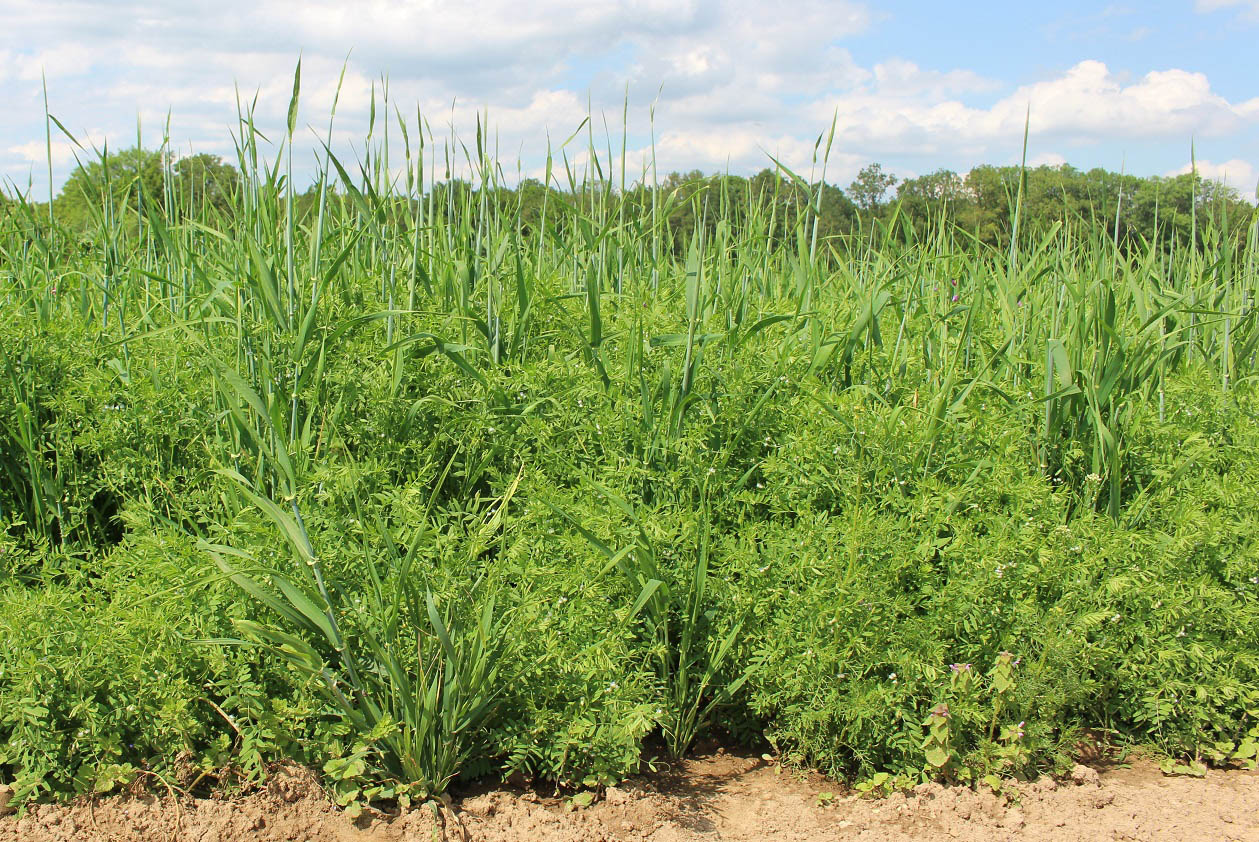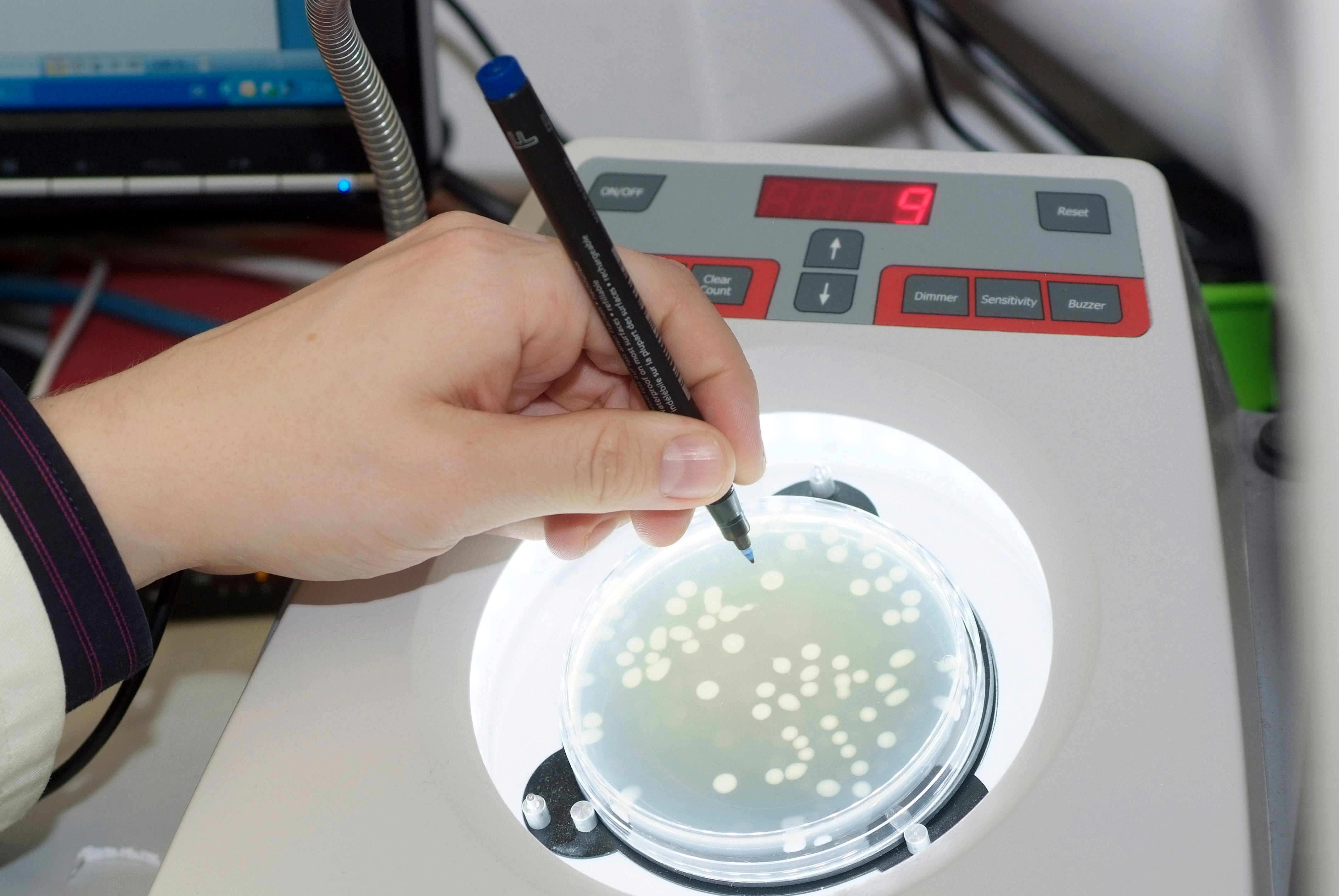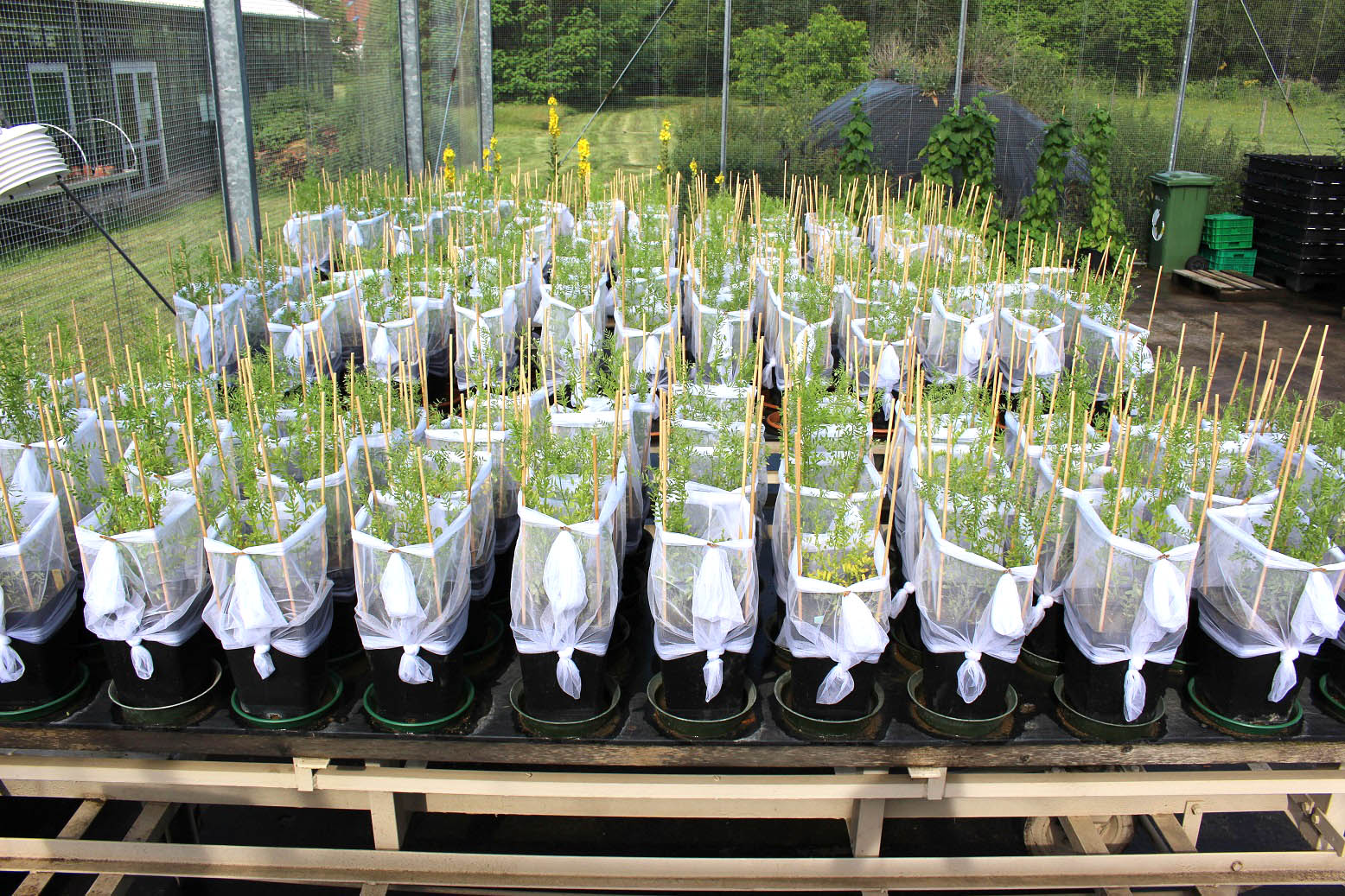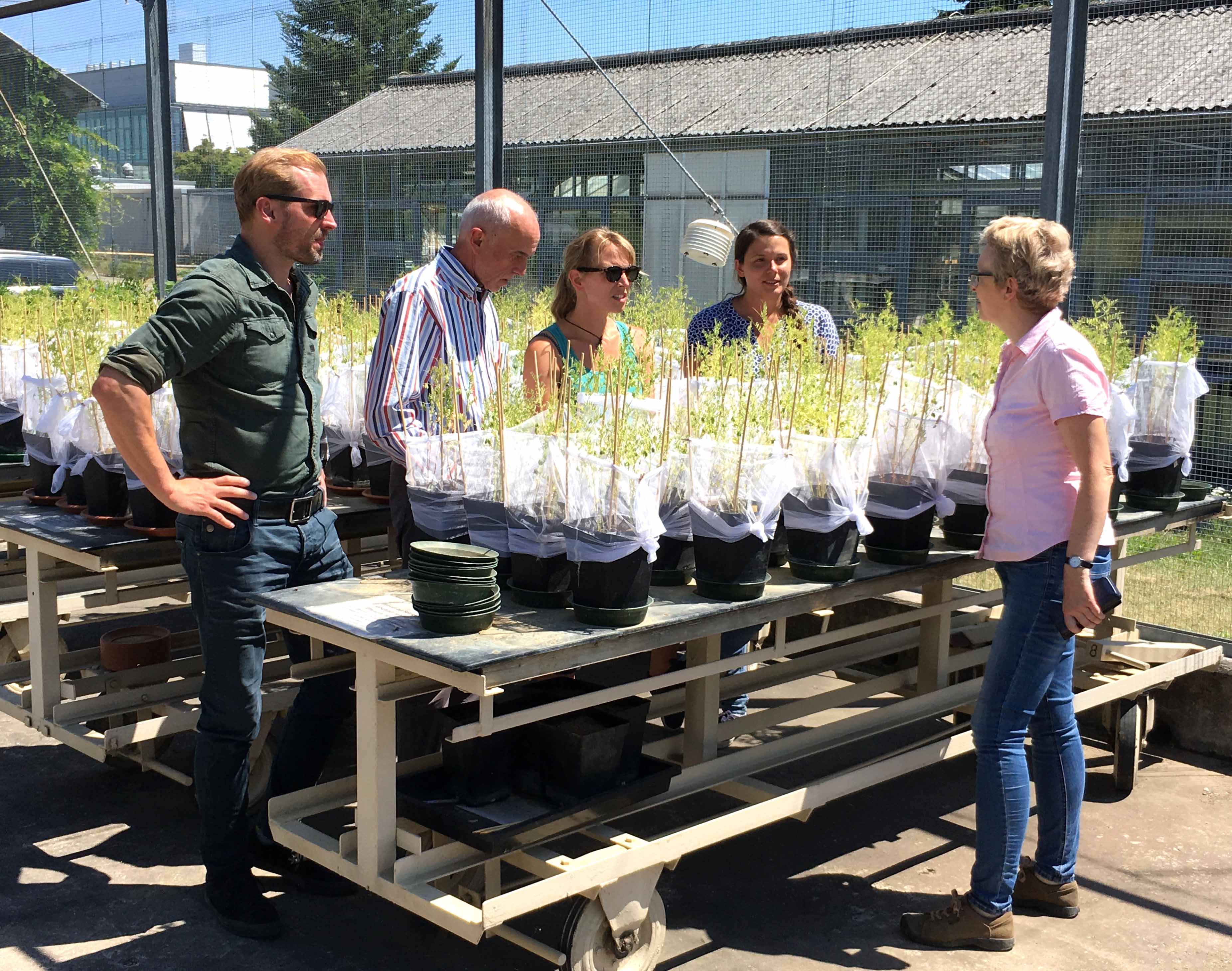Main navigation
nadicom: “Rhizo-Linse” project – excellent small fertiliser factories
Lentil plants, rarely cultivated in Central Europe in the twentieth century, are making a comeback. The "Rhizo-Linse"1 EIP-AGRI project aims to reintroduce old lentil varieties and make them appealing to farmers. A company called nadicom Gesellschaft für angewandte Mikrobiologie mbH is working on the development of an ecological product consisting of nodule bacteria that can improve lentil plant growth.
Nitrogen is an essential nutrient for plant growth. Nitrogen is the limiting nutrient for rapid growth. Most plants need to absorb nitrogen in the form of inorganic compounds. Legumes such as lentils, peas and soybeans, however, live in symbiosis with specific nodule bacteria (rhizobia), allowing them to utilise atmospheric nitrogen from the air. This gives them a huge competitive advantage over other plants, as they can thrive on barren and nitrogen-deficient soils. Thanks to this excellent supply of nitrogen, lentils are real energy packages: depending on the variety, they can contain up to 30 percent protein, many minerals and vitamins.2
Lentils make a comeback

Until the 1940s, lentil plants were cultivated across vast swathes of Baden-Württemberg. Lentil cultivation subsequently fell sharply throughout Germany, but was rediscovered around a decade ago. The Rhizo-Linse project was launched in February 2019 under the European Innovation Partnership for Agricultural Productivity and Sustainability (EIP-AGRI). Its aim is to increase the agricultural area for lentil cultivation and the profitability of conventional and organic legume crops. In cooperation with five action partners, a company called nadicom Gesellschaft für angewandte Mikrobiologie mbH is working towards a "rhizobacteria-based optimisation of lentil cultivation that takes into account bioeconomic value creation".
With the support of scientists from various research institutions, the goal is to improve the growth of different lentil plant varieties on various farms in Baden-Württemberg by using bacteria as rhizobacterial inoculants. At the same time, research is being carried out into the bioeconomic potential of mixed cultures (lentil plants with companion crops) with the aim of developing a new sustainable value chain. In practice, this involves inoculating lentil seeds with nodule bacteria and sowing them on fields. Plant growth is then monitored to find out which rhizobacterial treatment has a positive effect on the growth of the lentil plants. Nadicom, based in the city of Uhingen, is lead partner in the project. "So-called rhizobacterial inoculants can be used to enhance the plants’ ability to take up and store nitrogen,” said Hattig, an agricultural engineer.
Exploiting the potential of the plants

Nadicom is tasked with finding out which rhizobial strains have a particularly positive effect on the growth and resistance of lentil plants, and subsequently producing a liquid inoculant based on the chosen rhizobia. Together with another project partner, NovoCarbo, nadicom plans to develop an inoculant using biochar as carrier material, and make it available for practical application. The University of Hohenheim and the Agricultural Technology Centre Augustenberg are supervising the cultivation of the lentil plants in greenhouses and their subsequent harvest. From January 2020 onwards, the plants will be grown outdoors on six farms. BIOPRO Baden-Württemberg GmbH is responsible for analysing and evaluating the bioeconomic value creation potential of mixed crop cultivation.
As part of the project, the researchers are currently working to identify the best combination of lentil plants and rhizobia. Rhizobia are very plant species-specific and cannot live in symbiosis with all legumes. The researchers are therefore analysing healthy lentils from fields, looking at the nodules and isolating the bacterial strains contained in the nodules. A nutrient solution has been produced that enables the rhizobia to multiply up to a certain point, resulting in a sterile liquid product that the farmers can then use to treat their seeds. “By the end of 2019, we will have determined the strains that we can give the farmers to use as liquid isolates,” said the agricultural engineer. As the bacteria will have been selected from healthy plants, the liquid product will be suitable for organic farming. “Our aim is to optimally exploit the potential of the plant using natural mechanisms,” says Hattig.
Nadicom has been a successful service provider for the characterisation and identification of bacteria, fungi and yeasts since 2002, and also has experience in inoculating legumes. Nine years ago, the company specialised in the production and commercialisation of bacteria as "plant growth promotion bacteria", i.e. yield-increasing fertilisers based on bio-effectors, such as nodule bacteria. With their help, lentil plants are able to grow faster and produce more biomass. "When plants grow faster, they become more resistant, especially in the early stages," says Hattig, explaining the second positive effect of the symbiosis. Nadicom already offers marketable inoculants for many legumes, including soybeans and peas. At present, there are no commercially available rhizobia for lentil plants.
A community with mutual benefits

"The seeds are treated with the bacteria, which then enter the rhizosphere (root area) during germination. They attach to the roots and develop a symbiotic relationship with the plant relatively quickly,” Hattig explains. The lentil plant secretes agents that direct the bacteria to the roots. The nodule bacteria actively move towards them and penetrate the root cells where they cause the root tip to bend in and surround the bacterial cell.
The bacteria initially multiply and turn into thick, often polyploid, highly branched cells. This leads to the nodular thickenings in the roots, in other words, the nodules where the rhizobia live. The bacteria are nutritionally dependent on the plants, and take up water, organic compounds and vitamins from them. In turn, they fix the molecular nitrogen from the air, which is inaccessible to most organisms, and convert it into ammonium. Lentil plants are able to take up the nitrogen as a natural fertiliser, and so, in a sense, possess their own small fertiliser factory in their roots. Neither of the partners can use the nitrogen from the air on their own.
Importance for organic farming

If there are only a few nodule bacteria in the soil, they first have to find a suitable plant. Inoculating the seeds leads to the accumulation of rhizobia in the plant’s root area, which in turn leads to a more targeted uptake of nitrogen and a faster effect. “It goes without saying that legumes can also take up fertiliser that has been added to the soil, but the goal is to reduce the amount of fertiliser and nitrate leaching into the soil,” says Hattig. “In addition, the application of additional nitrogen may prevent the formation of nodules at the roots.” Once the plants have died, they can be used as green fertiliser and ploughed back into the soil along with the nodules, thus enriching the soil with nitrogen. This would lead to valuable nitrogen enrichment between two harvests, as other plants extract nitrogen from the soil, to which artificial fertiliser subsequently needs to be applied.
The "Rhizo-Linse" project also focuses on companion crops that are grown alongside lentil plants to protect and support them. Ideally, these companion plants would also be useful in their own right. Hattig stresses the importance of practicality.
General information about lentil plants
The lentil plant is a delicate, annual herbaceous plant, which is hermaphroditic. Thanks to its little helpers, it is relatively undemanding. However, it has not been a very popular crop. Lentils are mainly grown in Canada, Russia, India and Turkey, but have almost completely disappeared in Germany.3,4 At present, lentils are grown in small quantities only in the Swabian Mountains and Lower Bavaria. The barren soils of the Swabian Mountains are perfect for lentil plants. However, the plant is not very competitive and needs a good weed control system or stronger companion crops to help it outgrow other weeds. This is why lentil plants and other legumes are usually grown in mixed culture with oat and barley plants. The harvested produce then tends to be a mixture of lentils and grains, requiring a complex separation process. Lentil yield differs from year to year and varies between 200 and 1,400 kg/ha.5
The project will run from March 2019 to early 2022 under the European Agricultural Productivity and Sustainability Innovation Partnership (EIP-AGRI). It will be given a total of €655,500 from the European Agricultural Fund for Rural Development (EAFRD) and the Baden-Württemberg Ministry of Rural Affairs, Food and Consumer Protection.
References:
1 Infodienst Ernährung – Landwirtschaft – Ländlicher Raum:
www.landwirtschaft-bw.info/pb/MLR.Foerderung,Lde/Startseite/Foerderwegweiser/EIP-Projekte
2 veggieworld.de/veganes-protein-woher-bekommen/ (abgerufen 8.11.2019)
3 www.bzfe.de/inhalt/huelsenfruechte-erzeugung-4130.html
4 www.statistik-bw.de/Service/Veroeff/Monatshefte/20141205 (abgerufen 8.11.2019)
5 Agricultural Technology Centre Augustenberg:
www.ltz-bw.de/pb/,Lde/Startseite/Kulturpflanzen/Linse
Other sources:
www.online.uni-marburg.de/botanik/nutzpflanzen/tabea_mackenbach/cultivation.html
linsen.landwirtschaft-bw.de/pb/,Lde/Startseite/Forschung/Aktuelle+Linsen-Projekt
www.nadicom.com/de/agrarmikrobiologie
www.hfwu.de/forschung-und-transfer/institute-und-einrichtungen/institute-der-hfwu/institut-fuer-angewandte-agrarforschung-iaaf/forschungsprojekte/pflanzenbau/vermehrung-historischer-alblinsensorten-und-genotypenscreening-agronomischer-sowie-verbraucherrelevanter-eigenschaften-aeur-wiedereinfuehrung-unter-den-heutigen-anbaubedingungen-sinnvoll-und-moeglich/